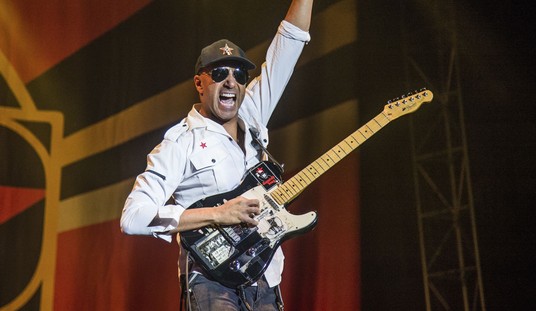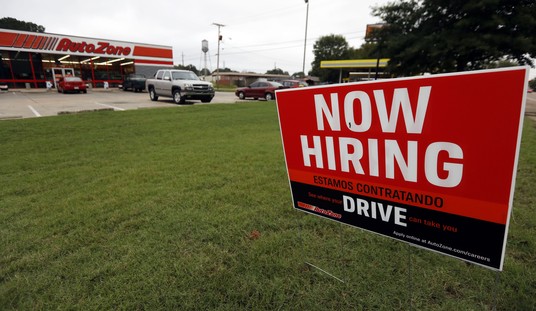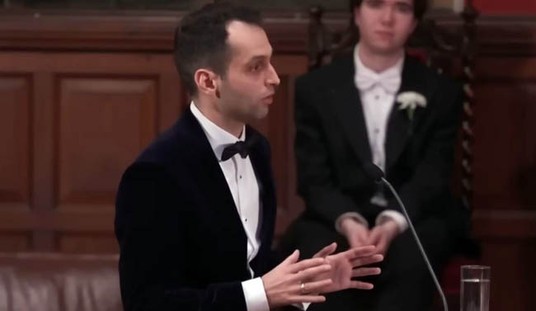The pollster who made his bones in the 2016 election has begun issuing his final assessments in key battleground states. Trafalgar Group’s Robert Cahaly shows essentially margin of error races in three key battleground states, with Donald Trump leading in two of them — Michigan and Florida. The third, Nevada, appears to be sticking with Biden thus far.
The interesting part of these calls is that the variance on all these from polling norms are not terribly significant, except possibly in Michigan. Trafalgar has generally scored Trump higher in polling than its competitors, both in 2016 and in this cycle. Allahpundit remarked two weeks ago that the polling world would get turned upside down if Cahaly ends up being right in a second cycle. What this shows is just how close these calls really are:
- Michigan: Trump 49.1%, Biden 46.6% (RCP aggregate average: Biden +6.5)
- Florida: Trump 49.6%, Biden 46.9% (RCP: Biden +1.2)
- Nevada: Biden 49.4%, Trump 47.1% (RCP: Biden +4.0)
In Michigan, the difference between Trafalgar and the RCP average of all polls (including Trafalgar’s) produces a nine-point swing, which is fairly significant. Allahpundit reminded me this morning that this predicts that Biden will do worse than Hillary Clinton did four years ago in a state he’s actually worked harder in than she did. Is it possible? Sure, but Trafalgar’s the only pollster making that call so far, and it’s not for a lack of other polling in the state.
The other calls here are safer bets. The swing in Florida is only 3.9 points and in Nevada it’s only 1.7 points, both within normal polling margins of error. Even if we only rely on the RCP averages, Florida and Nevada could go either way — and the real difference is in the ground games of the two campaigns in each state. And this is true in several battleground states, even apart from what Trafalgar finds.
That turned out to be true in 2016’s polling as well, at least in the final iterations. It’s a point that is often lost, but pollsters only missed on the margins of modeling, and then only because Hillary Clinton wasted a large organizational and financial advantage on an air war and analytics rather than a traditional ground game. The final battleground polls were close enough to suggest that the race was essentially a dead heat, especially in the Midwest.
Clinton lost because she failed to turn out the vote that modelers expected — and that Obama had in two previous presidential cycles. Donald Trump didn’t put a lot of investment in the traditional GOTV effort in 2016 either, but the RNC did, which helped give Trump just enough of an edge to win nailbiters in Wisconsin, Michigan and Pennsylvania. This time around Team Trump isn’t making that same mistake, but Team Biden is doubling down by completely eschewing a ground game. (More on that later.)
What makes Cahaly any better at this modeling than other pollsters? Politico published a lengthy interview last night with Cahaly and USC’s Arie Kapteyn about their insistence that the shy-Trump-voter phenomenon is real, and that it’s actually more significant in 2020 than it was four years ago. Traditional polling doesn’t capture it, Cahaly insists, because it creates the very scenario in which Trump supporters usually clam up:
I believe it was prevalent. In 2016, the worst being said about Trump voters is that they were “deplorable.” 2020 is a whole different ballgame. It is worse this time—significantly worse. This year had more things where you can get punished for expressing an opinion outside the mainstream than almost any year I can think of in modern history.
I’m finding that people are very hesitant [to share their preference for Trump], because now it’s not just being called “deplorable.” It’s people getting beat up for wearing the wrong hat, people getting harassed for having a sticker on their car. People just do not want to say anything.
We talk to lots of people in our surveys. And I hear things like, “Yeah, I’m for Trump, my neighbors are for Trump, but there’s one neighbor who just hates Trump. And when he walks his dog, he kind of wrinkles his nose by those houses, and I don’t want him to do it at my house, so I don’t put a Trump sign. I like the guy, and I don’t want him mad at me.” I hear stuff like that all the time. People are playing their cards close to their chest because there’s a stigma to being for Trump. What happens when the stigma rolls away from people who hide their vote, and they start admitting where they are? This is what I think is going to happen on Election Day.
Now, there’s certain people who are vocal Trump supporters. To me, it has more to do with your personality. Are you the kind of person who avoids awkward conversations, or are you the kind of person who enjoys them? If you enjoy them, and you’re for Trump, you’ll tell everybody. You’ll be in a boat parade! But if you’re the kind of person who’s quiet and non-confrontational, you aren’t going to say anything. And a lot of those people live in the Midwest. They’re very regular, down-to-earth folks who are kind and deferential.
I can tell you that’s a real cultural phenomenon in the Midwest. Whether that extends to polling is more difficult to say, and then whether pollsters can get around it if it does is yet another question. Cahaly got it right with his formula four years ago. If he gets it right again this year, the polling industry — at least the part of it that wants to do an honest job — will beat a wide and deep path to his door.









